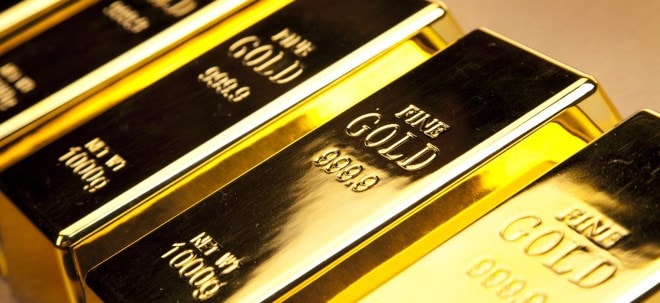I Turned $3,000 Into $210,000 By Selena Maranjian (TMF Selena)
May 10, 2006 <!--startindex-->This article's salacious headline might smack of exaggeration -- but believe it or not, it's true. How it happened
Picture it: New Jersey, 1995. Though not yet a Fool employee, I was an avid reader of the Fool's online site -- perhaps like you. The Fool's founding brothers, David and Tom Gardner, were occasionally recommending stocks, and one of their recommendations was an online service provider called America Online. I was still quite new to investing, and I didn't know enough to do much of my own research. But at least I had one thing going for me: I was an AOL customer. I used the service every day, and I liked what I saw of its user-friendliness, usefulness, and potential. So I bought. I snapped up $3,000 worth of shares and hung on. Over the following years, the stock would go up and down, sometimes significantly, but I kept holding on. Overall, it mainly went up, and it split and split. I remember checking my portfolio regularly -- several times a day! -- to see how rich I was becoming. I think that near the stock's peak, I was in possession of a 70-bagger! My $3,000 investment had become worth $210,000. If it doubled in value only two more times, I'd be (almost) a millionaire! All from a measly $3,000 investment. Did I sell shares along the ride up? No. Did I sell at least some near the top, when my mom told me to? Nope. (That strange thudding sound you hear is me kicking myself.) I kept holding on. AOL merged with Time Warner in 2001, and ever since then, the stock has struggled. I remember when the shares were priced in the $70s, but it's a fuzzy memory. They've been below $20 for around four years now. I did sell a big chunk of my shares -- in the teens -- when I needed money for a down payment on my house. And I finally got smart and sold some shares to diversify into some other stocks, instead of holding such a big chunk of my net worth in a company in which I no longer had the most faith. I still hold some shares, though, and despite my inclination to curse my stupidity for not selling earlier, I'm still sitting on a handsome profit, even at current levels. My cost basis is ridiculously low, and this has still been one of my best investments ever. I really shouldn't complain. How you can do it
If any of this story appeals to you, know that you have a chance to make it yours -- perhaps with an even happier ending -- if you make a few decisions differently: - First, pay attention to products and services you know, use, and love -- especially if you see more and more people using them. There may a great stock behind them, no matter whether they're big or small companies. Years ago, a few now-wealthy investors noticed that a coffee vendor named Starbucks was starting to spread out. And some early users of eBay's service probably saw the financial potential of the company long before you and I did. Plenty of well-known companies have done phenomenally well over the past decade or two. Are you a devotee of Hansen's (Nasdaq: HANS) Natural Sodas or its Monster Energy drinks? Do you occasionally pump gas into your car at a Valero (NYSE: VLO) station? Do you buy your clothes, or your children's clothes, at American Eagle Outfitters (Nasdaq: AEOS)? Do you buy your organic broccoli at Whole Foods Market (Nasdaq: WFMI)? Well, Hansen has been the best stock of the past decade, appreciating more than 24,000% between 1996 and 2005. American Eagle Outfitters gained nearly 5,000% during that decade, turning a $2,000 investment into nearly $100,000. Valero has increased in value sixfold over just the past five years, and Whole Foods has advanced fivefold. These companies have performed spectacularly right under our noses.
- Along those same lines, be wary of what you don't understand. If you don't understand a business, you probably won't be able to understand when business is going badly.
- If you buy in to a company hoping that it will be a multibagger for you, buy to hold. As long as you have faith in the company's future, it's often best to just hang on, despite inevitable hiccups. Don't let some naysayers in the media get you out of a stock because of short-term concerns if you still have long-term confidence. Consider Dell (Nasdaq: DELL) or Wal-Mart (NYSE: WMT). Both stocks have earned incredible returns for early investors, but both stocks have somewhat stalled since 2000.
This isn't to say that either Dell or Wal-Mart is a great buy going forward, but both stocks prove that as long as you get in early and hold on, the market will work for you. Despite the past five or so years of weakness, both Wal-Mart and Dell have made good money for investors over the past decade. Stocks are dynamic, and you're likely to lose more money trying to time them than you are just sitting tight.
- Do consider selling at least some of your shares if they rise to levels you can't justify. That was my main mistake -- irrationally and greedily hoping to get even richer. If a stock is trading for more than you know in your heart that it's worth, and you still hang on, you're no longer investing -- you're speculating, at great risk.
- Finally, consider checking out the stocks that David and Tom Gardner are recommending now. Their Motley Fool Stock Advisor newsletter service, launched in April 2002, offers two picks (and two investing styles) each month. On average, their recommendations are up 68%, versus 24% for like amounts invested in the S&P 500.
They have a few losers, of course, but these two picks show just how fast your money can grow. Here's to big profits in your future! This article was originally published on Feb. 2, 2006. It has been updated. Time Warner, Palm, Shuffle Master, Starbucks, and eBay are Stock Advisor recommendations. Dell is both a Stock Advisor and an Inside Value pick. Selena Maranjian owns shares of eBay, Time Warner, and Dell. For more about Selena, view her bio and her profile. The Motley Fool is Fools writing for Fools. <!--stopindex--><!--endtext--> http://www.fool.com/news/commentary/2006/...estmarhln001999&npu=y |


 Thread abonnieren
Thread abonnieren

